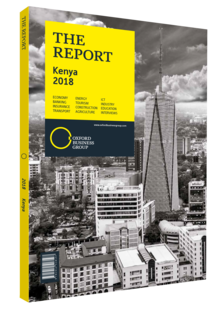Kenya's national trade policy aims to facilitate market access for a wider range of products
Kenya has followed an export-oriented trade policy since the mid-1980s, when it shifted from its previous strategy of import substitution. While the efforts of successive governments have met with some success, the trading data for 2017 makes for uncomfortable reading for planners at the Ministry of Industry, Trade and Cooperatives. According to the Kenya National Bureau of Statistics, the trade deficit stood at KSh1.1trn ($6.2bn) at the close of 2017 – up 33% over 2016. The growing trade imbalance has become a matter of concern for the government, and turning it around is now a strategic priority.
New Strategy
The challenge was noted by Adan Mohamed, former Cabinet secretary for the Ministry of Industry, Trade and Cooperatives, when he launched the National Trade Policy (NTP) in July 2017. The latest attempt to improve trade metrics focuses on reducing tariff levels, easing licensing requirements and eliminating price controls. If fully implemented, the NTP represents a significant liberalisation of the existing framework. The strategy recognises the shortcomings in Kenya’s trading profile, characterised by a narrow export base, predominantly of primary products, and an over-reliance on traditional markets. Consequently, the policy places considerable emphasis on supporting the growth of trade in services – an area of the economy expected to play a crucial role in development. The services sector, which includes tourism, transport and communications, trade and related services, and financial and business services, already accounts for around 60% of GDP, and growing segments such as business process outsourcing and technology-enabled services are helping to push this figure higher.
In terms of international trade, the NTP aims to tackle a number of constraints, such as the low value-added component in exported goods, insufficient trade facilitation infrastructure, a lack of medium-and long-term financing for small businesses, and limited trade finance for companies of all sizes. The policy’s broad range means its implementation will be phased, and is dependent on the cooperation of a number of ministries and state bodies. However, in the second half of 2017 several bills directly linked to the initiative were already before Parliament, including the Trade Development Bill and the Trade Remedies Bill – which together provide an important legal underpinning for the government’s proposals.
Measuring Progress
Assessing the effectiveness of the strategy is made easier by the existence of KenTrade. The state body, which operates under the National Treasury, rolled out its TradeNet System in May 2014, providing a single-window platform for online cargo clearance. The more than 10,000 registered users of TradeNet can access permits, licences and certificates from over 35 state issuing agencies in a streamlined, automated process. The platform is also directly linked to banks and mobile payment solutions through the Kenya Revenue Authority’s iTax System and the government’s eCitizen platforms, making it easy for users to settle obligations.
From the government’s point of view, one of the most obvious gains from the system is an increase in compliance levels and revenue streams to a number of agencies. TradeNet has also enabled stakeholders to measure the efficiency of trade infrastructure thanks to its ability to survey users and assimilate its data into reports. This research shows that significant progress has been made to the trading environment since TradeNet was introduced. The average number of processes involved with handling clients’ applications had been reduced by almost 50%, while the number of documents required has been cut by 30-50%. There have also been considerable time savings, with applications being processed in half the time as previously, and the time taken to prepare manifests reduced from two or three days to just 15 minutes for larger agents using automated systems.
You have reached the limit of premium articles you can view for free.
Choose from the options below to purchase print or digital editions of our Reports. You can also purchase a website subscription giving you unlimited access to all of our Reports online for 12 months.
If you have already purchased this Report or have a website subscription, please login to continue.

